People
On Her 40th Anniversary, Artists Share How Marian Goodman Became the Art World’s Least Pretentious Power Broker
Julie Mehretu, William Kentridge, and others offer a glimpse into the life of the very private dealer.
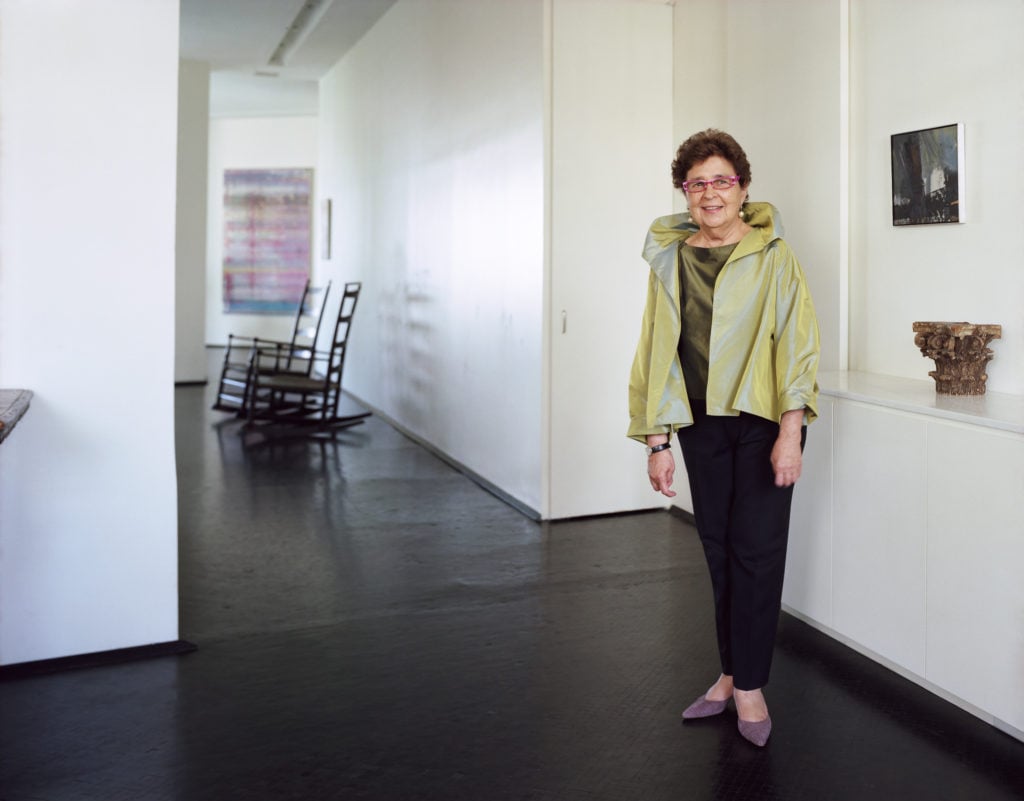
Julie Mehretu, William Kentridge, and others offer a glimpse into the life of the very private dealer.

Hilarie Sheets

There are few logistical challenges more daunting than convening three dozen overcommitted international artists in the same city for one evening. But such is the power of the gallerist Marian Goodman.
Last month, the Johannesburg-based artist William Kentridge, the Berlin-based Thomas Struth, and many others gathered in New York to honor their beloved art dealer, who this year celebrates the 40th anniversary of her influential 57th Street gallery.
The festivities stretched late into the night at the Rainbow Room, where artists including Gabriel Orozco (in from Bali), Steve McQueen and Tacita Dean (from London), and Danh Vo (from Berlin) partied to the reggae band The Wailers, the music of choice of the gallerist, who turns 90 next June.
“Marian was on the dance floor until the end,” says the Harlem-based painter Julie Mehretu. “Do you know the last time I was out until 2:00 in the morning?”
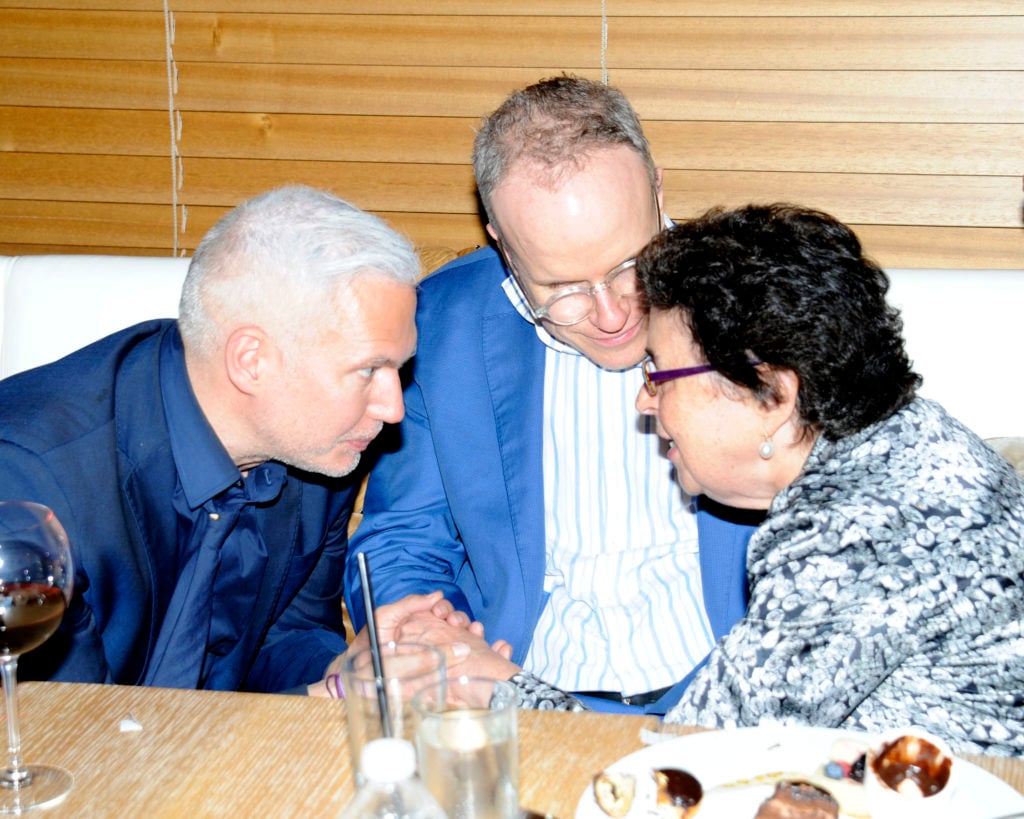
Klaus Biesenbach, Hans Ulrich Obrist, and Marian Goodman. ©Patrick McMullan. Photo: Paul Bruinooge.
Five feet tall and famously soft-spoken, Goodman is respected throughout the art world both for her taste and her business acumen. “There’s an ability of Marian’s to change a no into a yes, which I’ve still not quite understood,” Kentridge says. “There’s a kind of toughness that always operates on behalf of the artists. Curators and directors take her so seriously and understand that if she intervenes, it is for the artist’s and not the gallery’s sake.”
Her impressive track record for placing her artists’ work in public institutions and helping to secure them major exhibitions was underscored by a 2015 analysis in The Art Newspaper, which found that 30 percent of solo shows at US museums featured artists represented by only five galleries, including Marian Goodman. (The other mega-galleries on the list—David Zwirner, Pace, Hauser & Wirth, and Gagosian—are all run by men substantially younger.) And while other leading dealers have expanded their rosters and locations aggressively in recent years, Goodman represents a comparatively modest 46 artists and operates only three locations in New York, Paris, and London.
“Marian’s showed artists and approaches to art that now seem obvious, of course, but back then to start making those choices wasn’t obvious at all,” says the Albanian, Berlin-based artist Anri Sala. Goodman, who got her start publishing affordable prints and multiples by Pop artists in 1965, was drawn to the humanistic sensibilities of European figures, including Marcel Broodthaers, who she encountered at documenta 4 in Germany in 1968.
After trying and failing to find the Belgian artist representation in the then-insular New York art world, Goodman decided to open her own gallery in 1977 with a Broodthaers show. It received little attention.
Undeterred, she steadily built a European-centric program in the early 1980s with then-underappreciated artists including Gerhard Richter, Tony Cragg, Giovanni Anselmo, Giuseppe Penone, and Giulio Paolini, all of whom she continues to represent today. Dismayed by the tendency of dealers to sign or drop artists with changing trends, Goodman puts tremendous consideration into selecting the artists she brings into her gallery. The relationships can last longer, she has said, than many marriages.
To mark the 40th anniversary of her mighty gallery, we spoke with four of those artists, ranging in age from 75 to 43, about their experiences working with Goodman and what makes her tick.
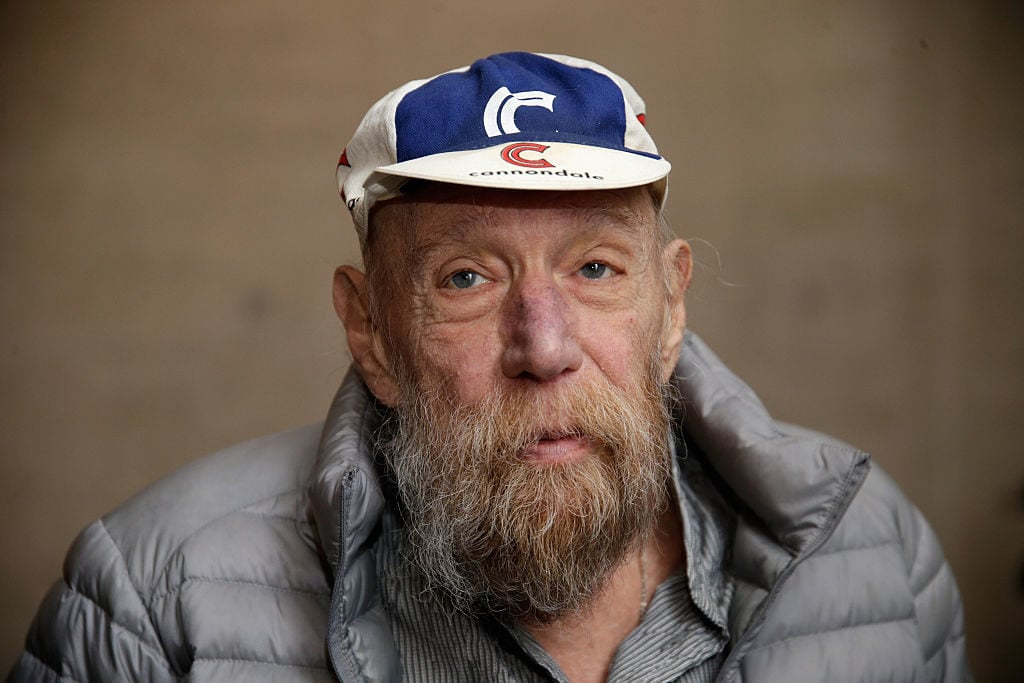
Lawrence Weiner in 2016. Photo courtesy Johannes Simon/Getty Images.
“We’re both New York City kids,” says Weiner of Goodman, who grew up in a liberal, intellectual family committed to social justice on the Upper West Side, where she still lives. “There’s a certain moral code built into her. Most stand-up people mean well but don’t do well. She means well and does well.”
Goodman first approached Weiner, now 75, about doing a show with her in 1986. He had long been represented by Leo Castelli, who Goodman has described as her role model for a gallerist. “I made a lunch with Leo and Marian at Da Silvano,” the legendary Greenwich Village restaurant, Weiner recalls.
The dealers assured him that a collaboration would not be a problem—a notable development in a business characterized by competition. Weiner went on to work with both galleries for more than a decade.
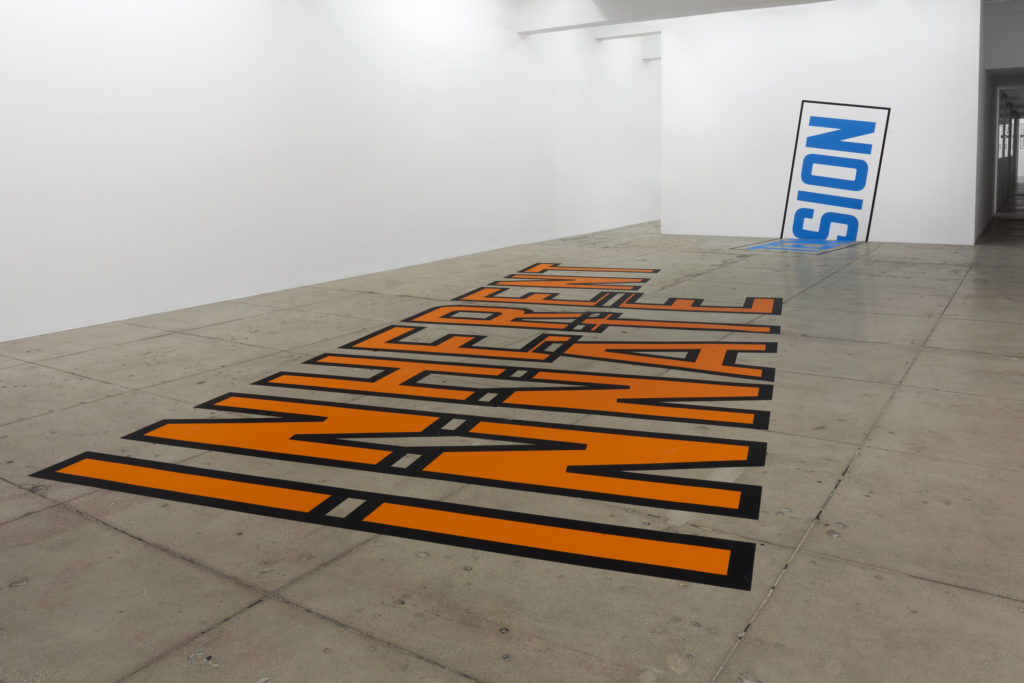
Lawrence Weiner, INHERENT INNATE TENSION (2015). Courtesy of the artist and Marian Goodman Gallery, New York. Photo by Cathy Carver.
“Leo liked Marian so much because she is very honest,” Weiner says. “Marian just thought Leo was an action figure. It was the best situation possible.”
Weiner speaks with Goodman frequently by phone or over a meal when they are both in town. “She’s basically shy but at the same time she gets impassioned by things. The art world really and truly pumps her up. When she’s talking to an artist, young or old, she knows who she’s talking to.”
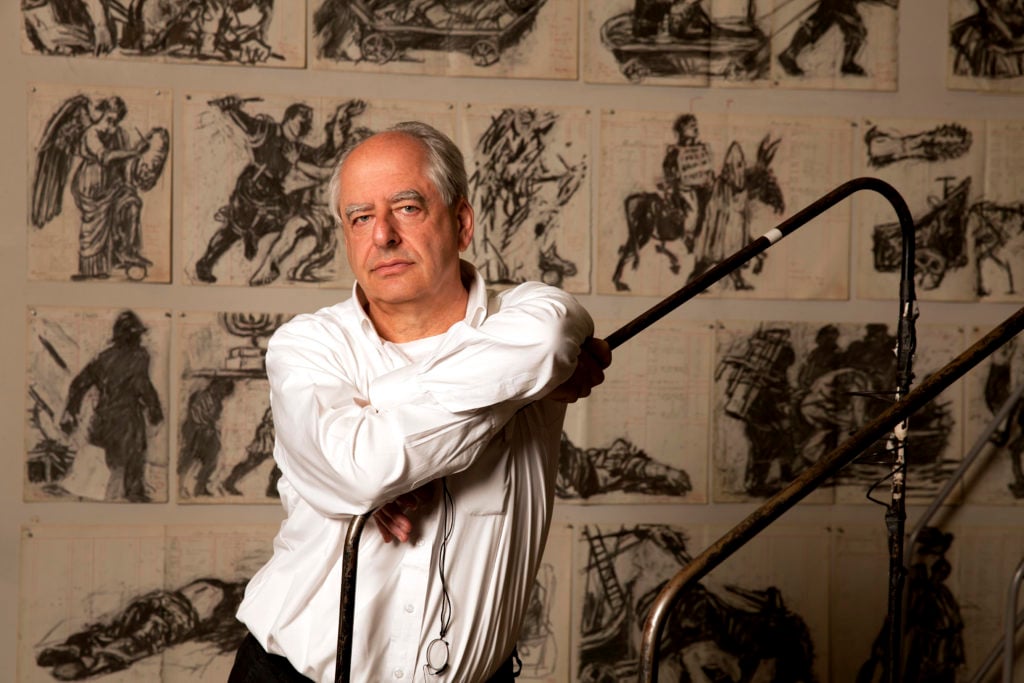
William Kentridge, Houghton, Johannesburg, South Africa, 2014/05/28
William Kentridge © Marc Shoul, courtesy Salzburger Festspiele.
In 1997, after his first broad international exposure in documenta 10, Kentridge received “a rather wonderful letter” from Goodman explaining why she thought he should join her gallery.
Not familiar with her, he asked friends for their opinion. They all said, “Are you crazy? People spend their lives waiting to be invited by Marian,” Kentridge recalls. Only after he came on board did he begin to appreciate the “entirely personal connection” she maintains with her artists.
Any pressure she applies is gentle, according to 62-year-old Kentridge. Rather than tell him he should do an opera production—of which he has now overseen several—her approach might be: “There’s a dinner happening and I think there are interesting people you should talk to,” he says. “Out of one such dinner, [the Met Opera manager] Peter Gelb and I fell into conversation and it was decided I would do a production for the Metropolitan Opera. There are many wheels that turn in this way.”
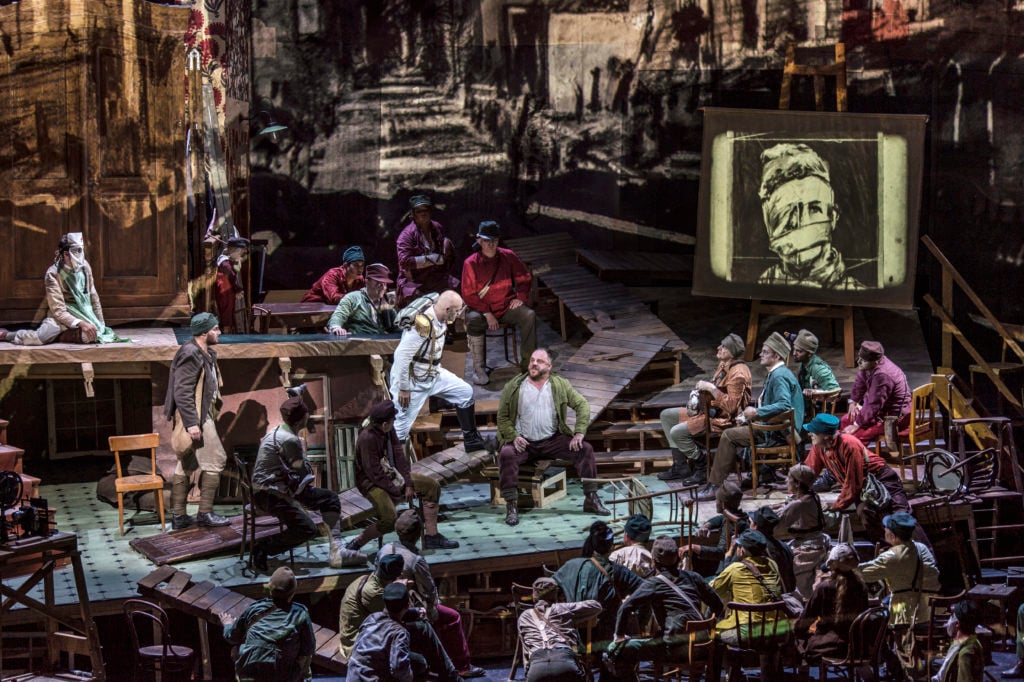
Kentridge’s production of “Wozzeck” from 2017. © Salzburger Festspiele / Ruth Walz
Her advocacy is also done with a light touch. Ahead of an exhibition, Kentridge once mentioned to Goodman that he was disappointed his work was being shown in a less-than-ideal room. But he had no intention of complaining to the curator.
“Four days later, there was a phone call from the curator who said I’ve had this great idea—your work would actually look better in this room three times the size,” Kentridge recalls. “I never asked Marian if or how she had done it, but it was one of the numerous examples where a less satisfactory circumstance has turned into a much more satisfactory circumstance.”
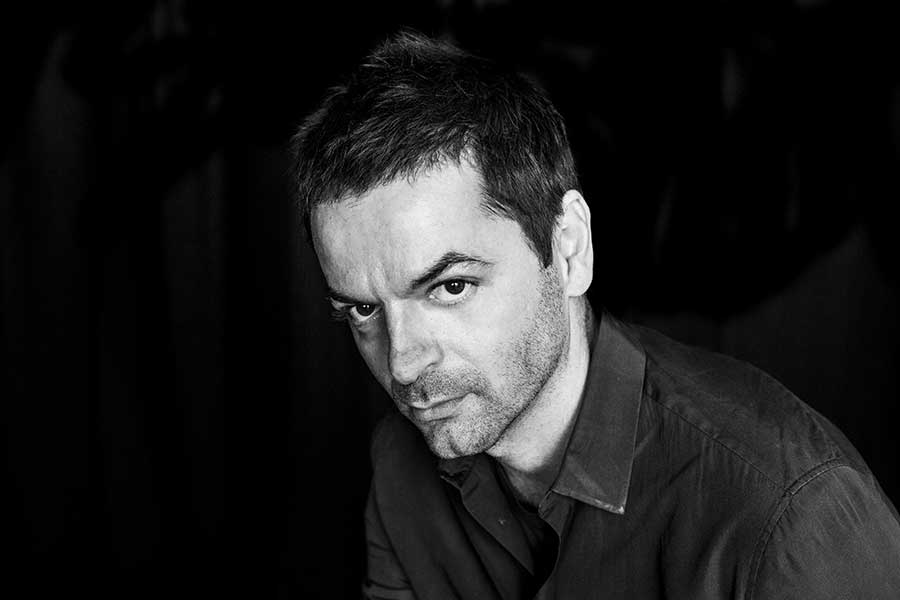
Anri Sala. Photograph: Jutta Benzenberg courtesy of Frieze.
Sala joined the gallery in 2003, after first meeting Goodman at the 2001 Venice Biennale, where he was showing, and then again two years later in Venice.
“I always liked how she was able to take something which originally comes from the edge and give it a place and give it visibility,” says 43-year-old Sala, who grew up in Tirana, Albania, under a Communist dictatorship that censored contemporary art. He makes haunting video and sound installations about history and trauma.
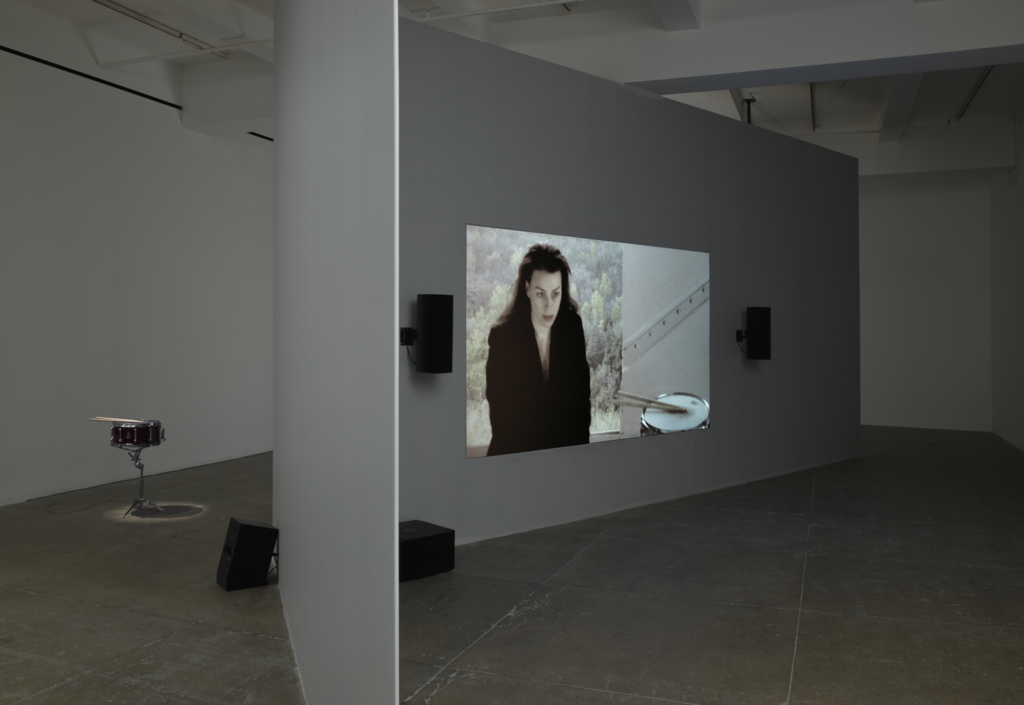
Anri Sala, Purchase Not By Moonlight (2008). Installation view.Courtesy of the artist and Marian Goodman Gallery, New York. Credit: Ellen Page Wilson.
He describes a kind of “alchemy” in his frequent conversations with Goodman. “There are not very clear borders around now we are talking work, now we are talking politics, now we are talking society,” he says. “The whole thing is one evolving subject. It remains very intimate and very human.”
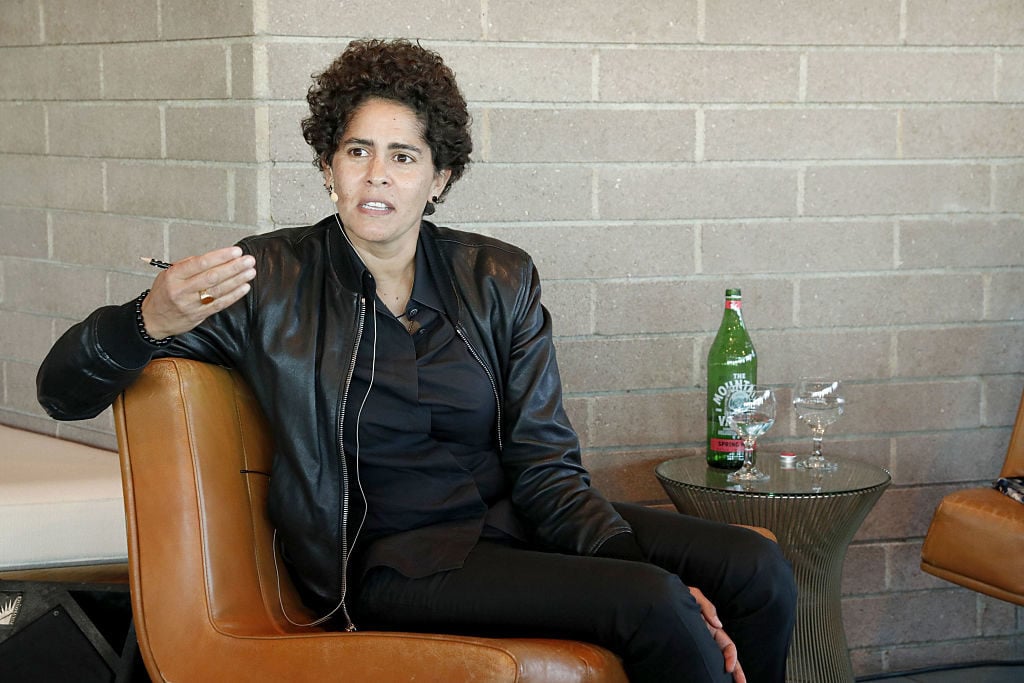
Panelist and Artist Julie Mehretu. Photo by Rachel Murray/Getty Images for Visionary Women.
Frustrated that so much of the conversation about her work in New York had revolved around the market, Mehretu joined the gallery in 2010 after an introduction by her friend, fellow artist Tacita Dean.
“A gallerist can either protect an artist or make an artist more vulnerable to certain aspects of the market,” says Mehretu, 47, who admires how Goodman gets works into institutional collections when she can and won’t work with collectors who treat artworks primarily as investments. “Marian’s very deliberate and the amount of work you put into a piece, she tries to meet you there with how she considers how to handle that work. That’s very different than a dynamic you see happening with a lot of galleries that are becoming huge enterprises.”
The two meet frequently, whether at Goodman’s apartment—where she has invited Mehretu for her slow-cooked soft scrambled eggs and to meet the Berlin-based artist Nairy Baghramian, who was staying there while installing her first show at the gallery—or at Mehretu’s studio.
“She’ll come toward the end of the day, sometimes for a beer,” Mehretu says. “She walks in in her cowboy boots and tells wonderful stories of who she’s traveled with.”
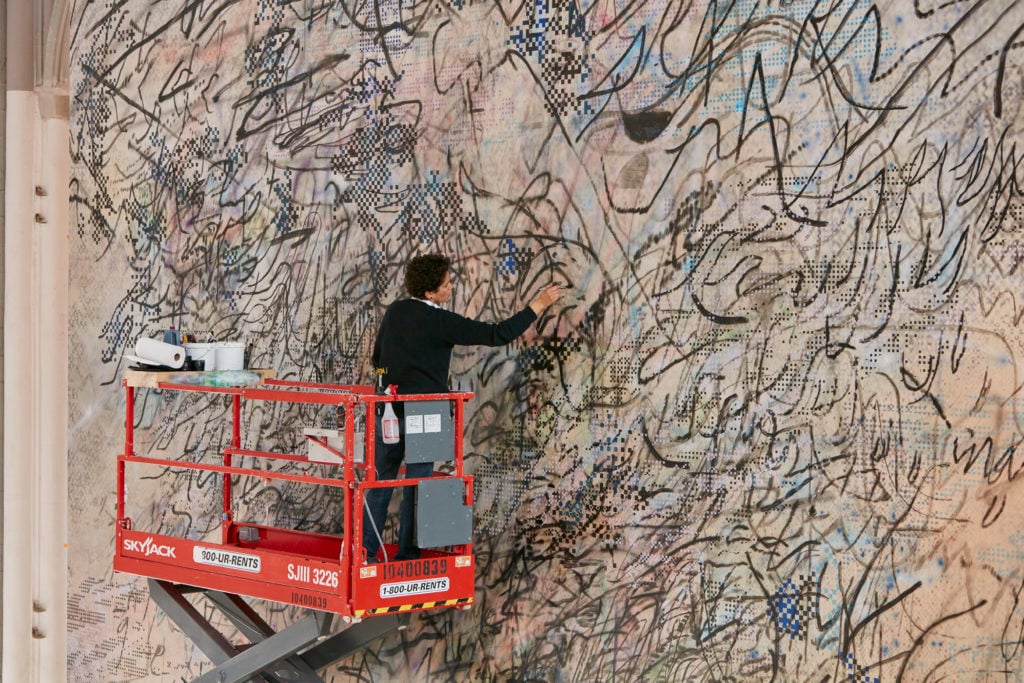
Julie Mehretu at work. Courtesy the artist and Marian Goodman Gallery © Julie Mehretu; photo Tom Powel Imaging, Inc.
The artist says her two monumentally scaled paintings installed this fall in the atrium of the San Francisco Museum of Modern Art (SFMOMA) would not have happened without Goodman. The museum originally approached Mehretu with an offer to pay for the production of the paintings, but would not commit to buying them until after they were complete.
Goodman was firm with both the museum and artist: The project would consume at least a year of her life, and there should be a commitment from the start to purchase these enormous paintings, which would not easily find another home.
“I walked away thinking, what museum buys something without knowing what it will be?” says Mehretu. But SFMOMA’s leadership came back six months later with a commitment to buy the works. “It was a challenge for San Francisco but I think it helped structure how they will go forward with their commissioning program. That was really Marian’s negotiation and brilliance.”
“It feels to me like her compass is how the artist should be taken care of in a situation,” Mehretu continues. “Marian doesn’t have to be very loud.”